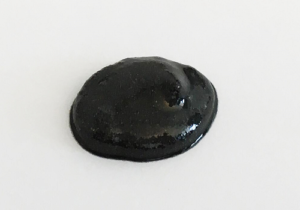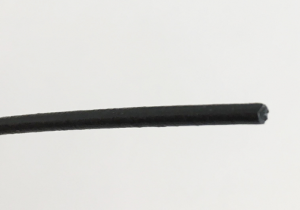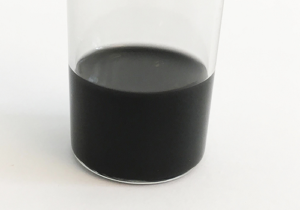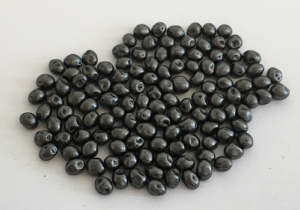 The way we talk about graphene, which is often used in 3D printing applications, it’s almost like the one-atom-thick, two-dimensional carbon material is magical. Graphene is lightweight, and is both the thinnest and the strongest material known to man – 200 times stronger than steel, but 12% more lightweight than the second lightest material in the world.
The way we talk about graphene, which is often used in 3D printing applications, it’s almost like the one-atom-thick, two-dimensional carbon material is magical. Graphene is lightweight, and is both the thinnest and the strongest material known to man – 200 times stronger than steel, but 12% more lightweight than the second lightest material in the world.
It’s also great at conducting both heat and electricity, and adding graphene into nanocomposite materials can improve 3D printable materials. But the material can be hard to produce in bulk, as well as difficult for large-scale use in industry.
 Significant efforts in research and development are being undertaken regarding innovations in 3D printing the material. But now, the efforts of Mamoun Taher, a researcher in the Department of Chemistry at Uppsala University in Sweden, have paid off.
Significant efforts in research and development are being undertaken regarding innovations in 3D printing the material. But now, the efforts of Mamoun Taher, a researcher in the Department of Chemistry at Uppsala University in Sweden, have paid off.
He has developed a new form of graphene, which makes it possible to use the material on a larger scale in industry, and also developed a startup company, of which he is the CEO, called Graphmatech.
Taher explained, “The challenge has been to scale up graphene’s outstanding properties from nanoscale at laboratories to macro-scale at industry without degradation.”
In addition to running Graphmatech, Taher spends his time conducting research at the university’s Ångström Laboratory. Entrepreneur Björn Lind, who helped develop the Disruptive Materials company and its Upsalite material at the university, works with him. Together, the two are partners with technology leader ABB, and enjoy access to the company’s Västerås laboratories.
According to the Graphmatech website, “We are on a mission to deliver truly world-changing graphene hybrid materials that have the potential to make the world a better place.”
![]() When graphene is produced on a larger scale, it can lose some of its unique properties and turn to something resembling its original graphite state. This is because the thin flakes are likely to re-stick to each other. Taher’s patented material, called Aros Graphene, uses designed molecules, or separators, to prevent this from occurring.
When graphene is produced on a larger scale, it can lose some of its unique properties and turn to something resembling its original graphite state. This is because the thin flakes are likely to re-stick to each other. Taher’s patented material, called Aros Graphene, uses designed molecules, or separators, to prevent this from occurring.
“The separators are designed to separate graphene flakes without degrading their properties, so we have control over the material,” Taher said. “The process has been designed to be environmentally accepted, we use water as a solvent and no hazardous chemicals.”

Mamoun Taher isn´t just developing a material, but also processes that can be used by graphene producers and other materials-related industries.
Taher, originally from Syria, wrote a doctoral dissertation in the chemistry of interfaces at the Luleå University of Technology. During his time as a postdoc at Uppsala, while he was working on graphene materials through a collaboration with ABB Corporate Research Center, he was surprised to learn how many properties were lost when the flakes stuck to each other. So he went to work to find a solution to the problem.
“I combined my previous research with my studies of graphene, and that’s how Aros Graphene was born,” Taher said.
Looking for support for his new material, Taher contacted European sustainable energy organization InnoEnergy and UU Innovation, Uppsala’s commercialization support unit for research results, and things took off from there. Graphmatec is now one of the top 10 companies in this year’s Nordic Cleantech Open startup competition, in addition to being a member of the InnoEnergy Incubator program and SynerLeap, the ABB Innovation Growth Hub.
“We aren’t just developing a material, but also processes that can be used by graphene producers and other materials-related industries,” Taher explained. “We’re currently in discussions about licensing our process.”
- Aros Graphene Thermal Grease
- Aros Graphene Polymer 3D Filament
- Aros Graphene Conductive Ink
- Aros Graphene Coated Polymer Powder
Aros Graphene, which is available in four products including 3D printing filament, is a novel graphene nanocomposite material that’s lightweight, self-cooling, and self-lubricating. The material has a variety of applications in the electronics and telecommunication industries, where it can dissipate heat efficiently from electronics; this makes it possible to create designs that are more compact, are safer to operate, and have a longer life span.
“We’ve seen that a thermal paste that contains Aros Graphene is 180 percent more thermally conductive than other thermal paste products on the market,” said Taher. “In the close future where more and more data centres will be needed to store data, there is huge demand for advanced thermal management solutions.”
The startup is also working on several additional projects at the moment, including 3D printing, self-lubricating mechanical systems, printed supercapacitors, and moving electrical contacts.
Discuss this and other 3D printing topics at 3DPrintBoard.com or share your thoughts in the Facebook comments below.
[Source: Uppsala University / Images: Graphmatec]
Subscribe to Our Email Newsletter
Stay up-to-date on all the latest news from the 3D printing industry and receive information and offers from third party vendors.
You May Also Like
Air Force Awards Fortius Metals $1.25M to Qualify 3D Printing Wire for Hypersonic Applications
AFWERX, part of the US Air Force Research Laboratory (AFRL), awarded a Direct-to-Phase II Small Business Innovation Research (SBIR) contract worth $1.25 million to Colorado’s Fortius Metals, to accelerate qualification...
US Air Force Awards JuggerBot $4M for Large-format Hybrid 3D Printing
Large-format 3D printer manufacturer JuggerBot has received a $4 million grant to develop a large format 3D printer, courtesy of the Under Secretary of Defense, Research and Engineering Manufacturing Technology...
Where Have All AM’s Unicorns Gone?
In the rapidly evolving world of 3D printing, startups valued at over a billion dollars, known as unicorns, once seemed as fantastical as the mythical creatures themselves. While a few...
How My Childhood Fascination with Planes Led to Investing in 3D Printing
My fascination with aerospace started young, and I started studying planes–identifying them in the sky and learning everything I could about how they work. Fast forward to my first week...



































